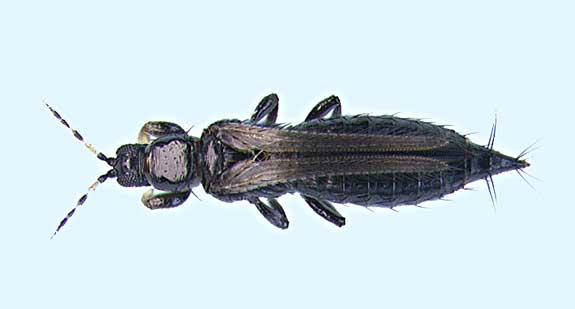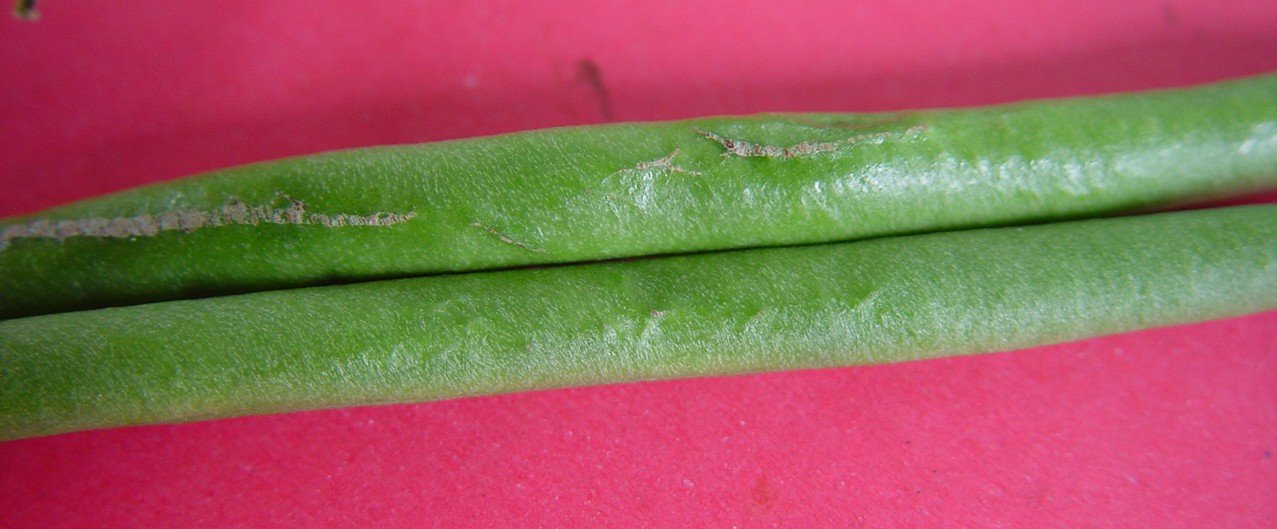(Megalurothrips sjostedti and Frankliniella schultzei)
Credits: Biovision-Infonet

(c) Georg Goergen (Courtesy of EcoPort, www.ecoport.org)

(c) A.M. Varela, icipe
Thrips are among the most widespread and important pests of cowpeas in Africa. The cowpea flower thrips or African bean flower thrips (Megalurothrips sjostedti) causes yield losses of up to 100%.
During the pre-flowering period, nymphs and adults of this thrips may damage the terminal buds.
However, the main damage is on the flower buds and flowers. Attacked flower buds become brown and eventually fall off, leaving behind dark red scares.
Damaged flowers are distorted, malformed and show decolouration and may fall off. Infested on pods are malformed.
What to do:
- Intercropping: There are several reports that thrips populations are reduced when cowpeas are intercropped with maize or sorghum. However, there are also conflicting reports (Ezueh, 1991) indicating increased pod borer and pod sucking bug populations in mixed cropping of cowpeas with sorghum (Nanpala et al, 2002).In Kenya, populations of the African bean flower thrips (Megalurothips sjostedti) and Hydatothrips adolfifriderici on cowpea buds were almost halved by intercropping the cowpea with sorghum and maize (Parella and Lewis, 1997).
- Use resistant varieties. The varieties “IT90K-277-2”, “KVx404-8-1”, “Moussa Local”, “Sanzisabinli”, “Sewe”, “TVu1509”, “TVx34236”, and “IT91K-180” are reported to show resistance against the cowpea flower thrips in West Africa (IITA).Spraying with neem extracts. In Ghana a threshold of 5 thrips per flower is recommended as a guideline before spraying (GTZ/PPRSD). In Uganda the economic injury level has been established at 7 thrips per flower (IPM CRSP)